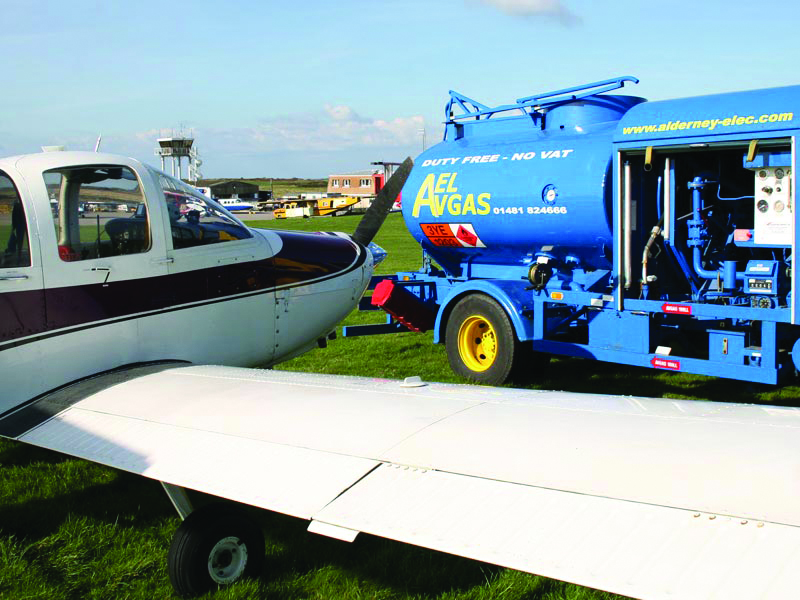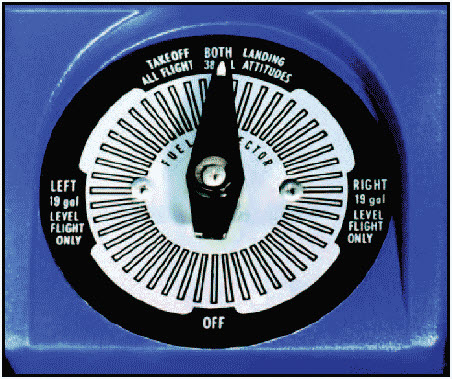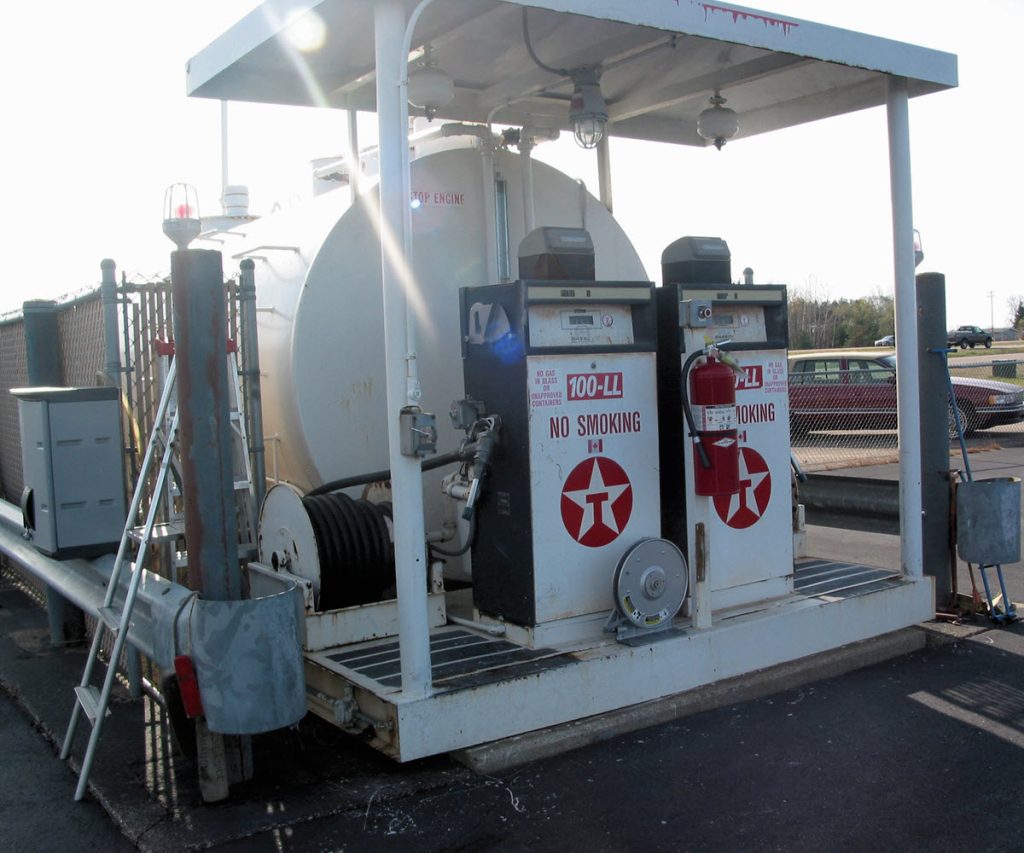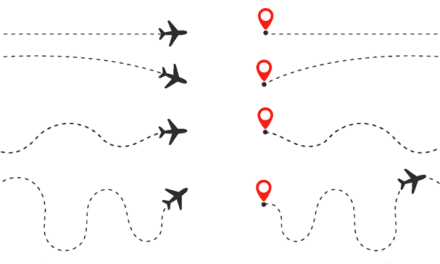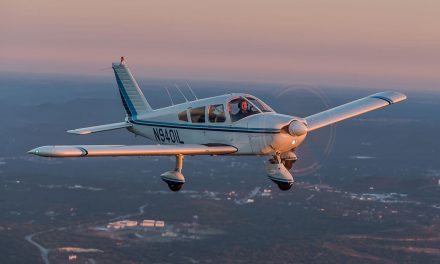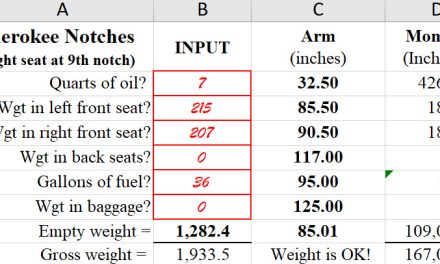Keeping Track of the Time/Speed/Distance Equations is Only Part of Fuel Management
It was the Christmas holiday, and I was on my way back from the Bahamas to Venice, Florida. Joe Ponte, public relations director of Piper, had graciously loaned me a new Cherokee Six 300 in conjunction with a pilot report, and I’d elected to take my mom and stepfather on a quick, four-day trek to Freeport and Nassau.
On the trip back, we’d made a stop in Ft. Lauderdale to clear customs, turn in our survival gear, and close our international flight plan before relaunching for the short diagonal hop across the state to Venice on the Gulf Coast.
My parents were luxuriating in the back of the big Six as we cruised 6,500 feet above the swamp when the engine suddenly quit cold. The immediate silence got everyone’s attention, especially mine. I was the number one son, and mom trusted me implicitly in any airplane. I didn’t want to dispel that trust by doing something stupid, though it seemed I already had.
Of course, I’d let one of the Cherokee Six’s four tanks run dry, and the engine had shut down in a heartbeat, without a telltale tick of the fuel flow or any other forewarning. As calmly as I could, I turned on the fuel pump, then, feigning a casual motion, reached down and switched to a tank with some fuel in it. I turned to mom and Bob in the back seat, summoned what I hoped would be a reassuring smile and said, “Sorry about that. It’s no big problem. I just ran a tank dry. The engine will pick up in a few seconds.”
I turned back forward, expecting power to return at any moment. I waited and waited. Nothing happened. We were gliding down toward Lake Okeechobee, and I was beginning to wonder if we were about to discover firsthand that the lake was indeed only five feet deep as I’d read.
Finally, after perhaps 20 seconds that seemed more like 20 minutes, I heard some expectant coughs from the Lycoming before it came slowly back online. We continued to Venice and mom’s only comment after we landed was a calm, “Does that happen often?”
Fortunately, if you’re smart enough to plan ahead, it need never happen — even once. I obviously wasn’t and didn’t, so it did.
Fuel Exhaustion vs. Fuel Mismanagement
Fuel exhaustion is exactly what it sounds like — running the tanks dry. Conversely, fuel mismanagement relates to landing with fuel still on board but that fuel is inaccessible because of a system problem, because the pilot didn’t know he had it available, or because he simply forgot to change tanks.
Fuel management isn’t really that tough these days, considering that totalizers keep almost perfect track of fuel burned and remaining. Even modern aircraft fuel gauges are more reliable than they used to be. In fact, managing fuel use was never that difficult to begin with, provided you knew how much you had on board at start-up, how much you were burning, and when you departed. Assuming there were no leaks, the answer was a simple problem in elementary math.
The difficulties arise when you don’t know all three of the items above. Trouble is, many pilots are convinced they do know how much fuel is in the tanks when, in fact, they have only a vague idea.
Fuel Capacity
First, let’s consider fuel capacity. For lack of a better example, I’ll use my airplane’s fuel system. According to the book, I can carry 64 gallons in my airplane…or can I? I bought my latest bird in 1987 and knew it had never been wrecked (according to the logbooks), so it was reasonable to assume the tanks were not deformed and still in the original shape. Fortunately, I had the airplane’s tanks resealed a few years ago, so I had the perfect opportunity to determine true capacity. Every ounce of fuel had to be drained in order to reseal the tanks, and that meant I was starting from true empty.
Accordingly, I pushed the airplane out to a level ramp, with no apparent list left or right. It was mid-morning, and the temperature was about 60 degrees F, pretty close to standard, so fuel density wasn’t a concern. (Some long-distance flyers, in search of maximum range, have their fuel supercooled and pumped aboard at the last possible minute. They then climb quickly to high altitude and burn the top off each tank before the avgas can expand and overflow.)
When the fuel truck arrived, I asked the fueler to pump the 100LL slowly and alternate tanks every 10 gallons so there’d be less chance of an air bubble. While he pumped, I shook the wing at the tip to help any air escape. Then, I watched carefully to make certain the level came to the exact bottom of the filler neck.
When the fueler was done, the meter suggested I had taken aboard 33.1 gallons in the left tank and 33.4 gallons in the right for a total of 66.5 gallons — 2.5 more than the stated maximum. According to the flight manual, that’s all usable, so I know I can assume that figure for flight planning, but I don’t. I use the standard 64-gallon capacity instead.
Deformed Fuel Tank
A deformed tank can be more common than you might imagine, and any deformation will almost always rob you of fuel capacity. After a friend with a Comanche 260 died of a heart attack many years ago, his widow asked me to maintain his airplane for her, taking it out for a “walk” every two months or so — not such bad duty. She swore she’d never sell it, as it had been her late husband’s beloved toy. Finally, reality intervened, and she asked me to sell it for her.
The second year I had the Comanche relicensed. However, just before I handed the keys to the new buyer, the mechanic commented there was a significant ding in the left tank, probably from an accident long before my friend bought the airplane. Though I’d never run the Comanche dry, I’d noticed that the left tank always seemed to take less fuel than the right. Lesson learned.
Fueling on level ground was another part of my fuel management education. Once, on a ferry flight to South Africa in a Cessna Caravan back in the 1980s, I parked on a slightly slanted ramp in Libreville, Gabon, and fueled the airplane for the next day’s early departure. The following morning when I walked out to the Cessna, there was a huge fuel stain under the down sloping wing. I called the truck back for a top off and discovered I’d overboarded 30 gallons of Jet A onto the ramp. I departed some $200 poorer, but, at least, that much wiser.
Wings Not Level and Trapped Air
There’s a second similar situation that can also result in misfueling. Both struts need to be equally depressed or you could wind up with a fuel imbalance — even on level ground. Aerostars, perhaps because of their long gear and hydraulic struts, are especially prone to asymmetric strut depression.
OK, so you know the airplane is perfectly level when the truck arrives. There’s yet another way to wind up with less fuel than you planned. Some models with high dihedral, the Piper Malibu for one, are prone to trapping air at the tips. The fuel level will be right up to the lip, but you may wind up with less than the maximum 120-gallon capacity (on the Malibu).
One morning, in preparation for the final leg from Reykjavik down to Louton, UK, I went out to a new Mirage, popped the caps, and shook the wings vigorously to release any trapped air. The level dropped at least an inch on one side and two inches on the other. It required five additional gallons to bring the tanks to max capacity — that’s worth about 15 minutes in a Malibu.
The AOPA Air Safety Foundation reports that fuel exhaustion or mismanagement are all-too-common causes of accidents, generally fourth behind landing accidents, takeoff incidents, and maneuvering flight at low altitude.
Calculating Fuel Burn
Now that you’re reasonably certain you have truly full fuel, you can make some intelligent estimates of burn and endurance. I’ve had so many experienced pilots suggest deducting an automatic 5% from known capacity that I do it all the time. If you normally fly with 80 gallons in full tanks, you might want to consider using 76 gallons as max and do all flight planning based on that number. On my airplane, I assume I’m starting with 61 rather than 64 gallons.
If your flying machine has a combination engine analyzer/fuel totalizer such as the JPI EDM-800, that’s the best possible protection against a dumb mistake. For those with a reasonable idea of fuel burn but no totalizer, you can make intelligent estimates that will work nearly as well.
My airplane burns about 11 gph at max cruise, and I subtract that figure as my reserve. That means I have 50 gallons to work with on any trip. As a rule of forefinger, I typically multiply burn at 75% by 1.4 for the first hour to account for climb (that will vary with weight, temperature, final altitude, turbulence, phase of the moon, and your personal biorhythms, but it should be close); then, determine what will be left for the enroute portion. In this case, I’ll burn about 16 gallons in the first hour, so I’ll have 34 gallons plus reserve remaining. That’s about 3.1 hours of endurance.
At 150 knots cruise and perhaps 15% less during the first hour, I expect to fly about 127 nm in the first hour and another 465 nm during the remaining 3.1 hours for a total no-wind range of 593 nm (plus the aforementioned one-hour reserve). Also, remember that I’ve built in a deliberate three-gallon hedge, at least another 15 minutes of endurance. Add all that to the extra 2.5 gallons in my airplane’s strangely enlarged tanks, and there’s more like a “free” 30 minutes of additional reserve.
Trying to pinn down range precisely assumes you know your airplane fairly well, can count on a given true airspeed, and that you’ll be flying in smooth air with minimum turbulence. It also assumes the winds will be calm (almost never the case)
I could increase range slightly by using a reduced power setting, but my airplane seems to gain very little range at lower power, so I stick with at least 70 % nearly all the time.
Factoring in Wind
I’ve always used two simple rules to handle the effects of wind. These were taught to me by a highly experienced ferry pilot. Donn Kerby flew a little of everything across the Atlantic to Europe in the halcyon days of the ’70s and ’80s, and tallied 299 trips before he finally retired. (We razzed him a lot about getting that final 300th trip but he wanted to play golf.)
Donn’s rules were simple: reduce any forecast tailwind by a third and add 25% to any headwind The most likely consequence of such a policy is that you’ll arrive at your destination a few minutes early and with more fuel than planned. Works for me.
Switching Tanks
Actual fuel management is usually fairly simple on most general aviation airplanes with one fuel tank in each wing and a simple selector that has left, right and off positions. I’ll generally depart on one tank (usually the left if I’m alone in the airplane), ascend to my chosen altitude, set up the airplane for cruise; then, note the time, switch to the opposite tank for an hour, and alternate as necessary.
Another peripheral concern if you have two tanks is to make certain the selector works properly. If you run a tank dry, reach down to switch tanks and find the selector refuses to move or comes off in your hand you have real problem. That’s one reason I always switch before any tank gets below about three gallons, providing me a 15-minute hedge to find someplace to park.
Overcoming Murphy’s Law
After my experience in Florida — and a few other before it — I never run a tank dry. I’m not a complete idiot (some parts are missing), but I’m fairly certain Murphy’s Law will have a tough time catching up with me and all the hedges I’ve built into my fuel planning.
I can lose some fuel to overboarding or an air bubble, the wind can be some stronger than forecast, consumption can increase, I can suffer rerouting by ATC, the airplane can pick up some ice and slow my speed, or I can be forced to deviate around weather, but I can still make it to my destination or a reasonable alternate.
At least, that’s what I keep telling myself. So far, so good.


